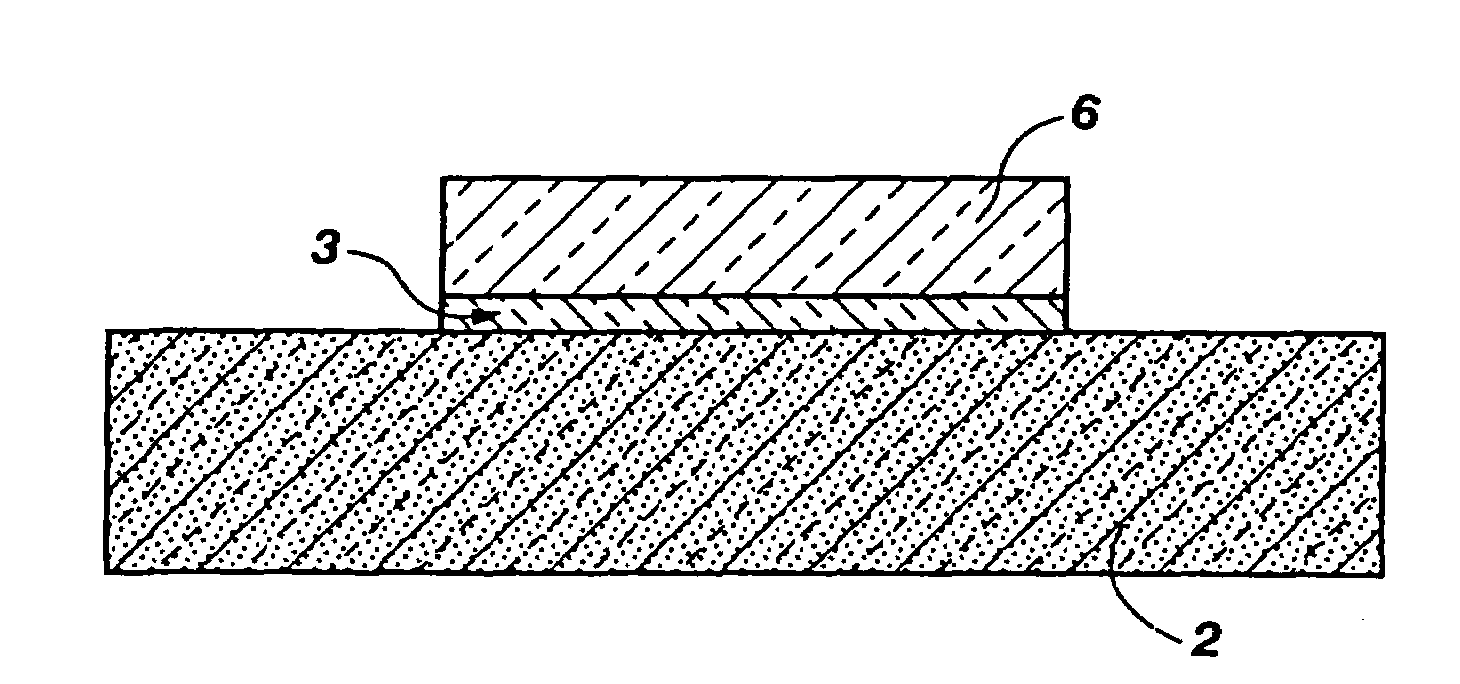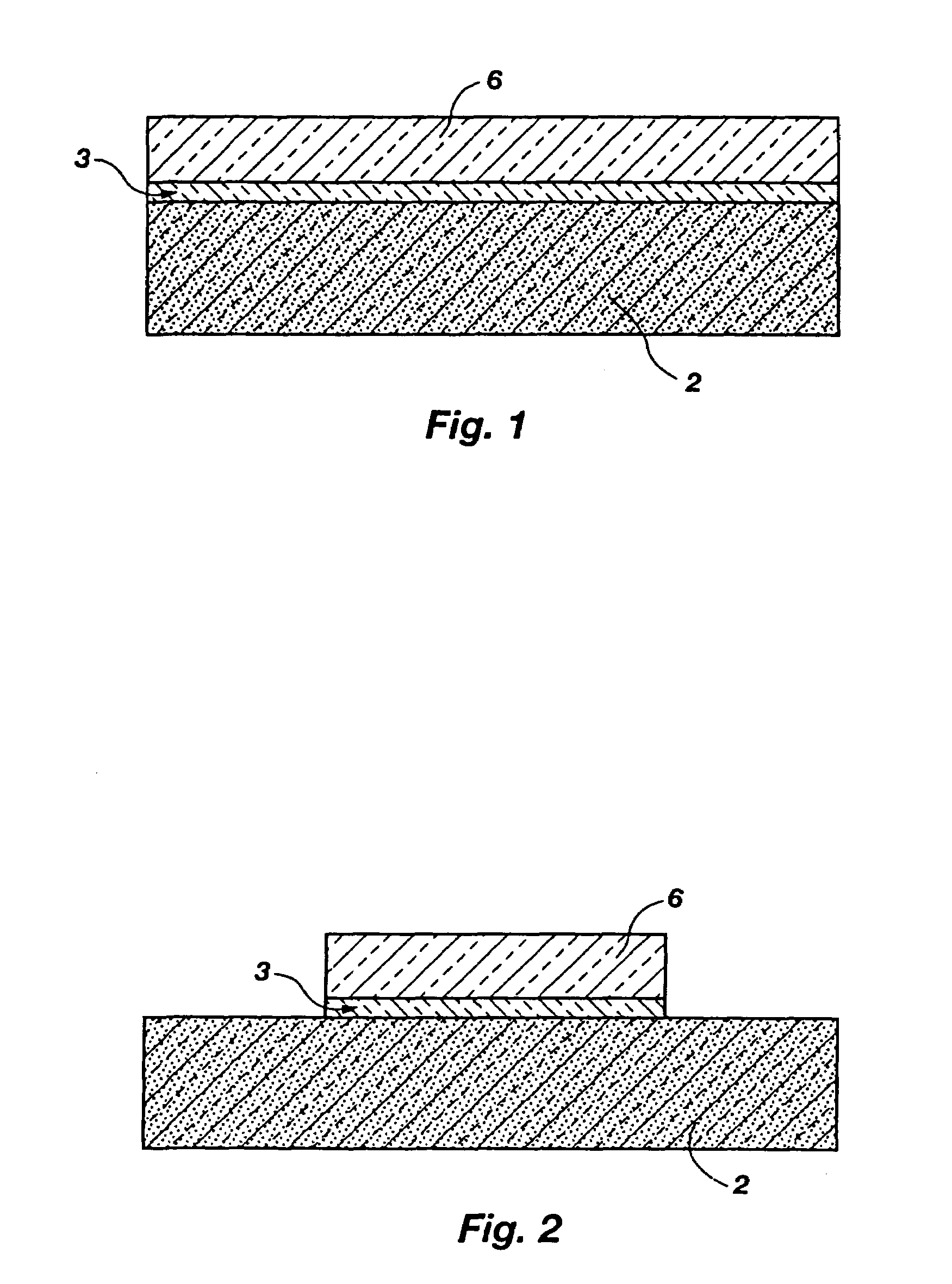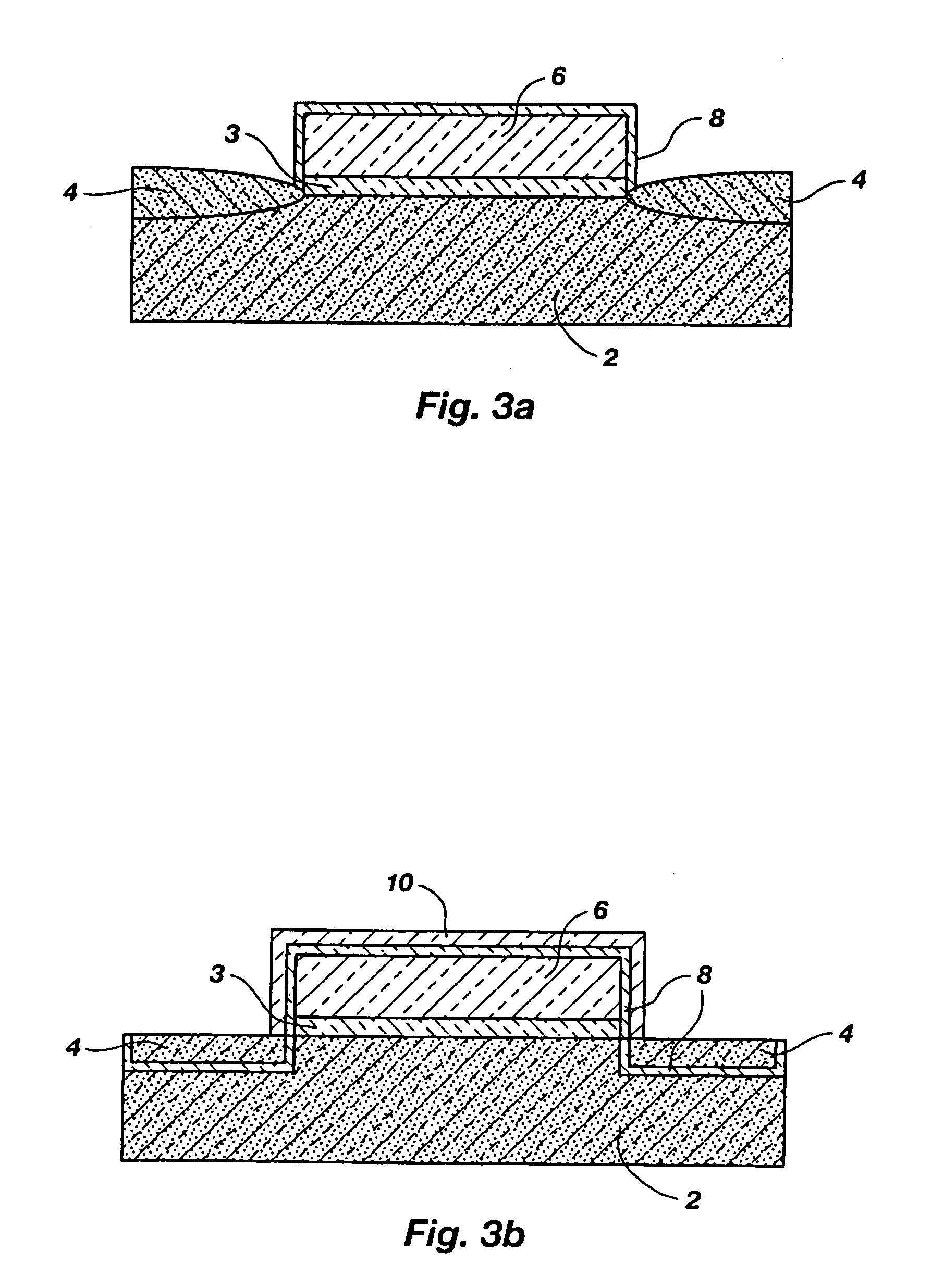Etchants and etchant systems with plural etch selectivities
a technology of etch selectivities and etchants, applied in the direction of coatings, decorative arts, electrical equipment, etc., can solve the problems of reducing the etch rate of silicon nitride, difficult to etch an oxidized silicon nitride structure using phosphoric acid, and phosphoric acid is unable to significantly etch silicon nitride, so as to achieve the effect of minimizing the removal of desired isolation regions
- Summary
- Abstract
- Description
- Claims
- Application Information
AI Technical Summary
Benefits of technology
Problems solved by technology
Method used
Image
Examples
example
[0034]The preferred inventive method of using phosphoric acid at a first, higher temperature in a first step and then at a second, lower temperature in a second step was compared with using a conventional method of using HF acid in a first step and then using phosphoric acid in a second step. In both instances, after forming a thin pad oxide layer on a silicon substrate, a silicon nitride layer was deposited on the pad oxide layer. The silicon nitride and pad oxide layers were then patterned and etched. Field oxide regions with a thickness of 2200 angstroms were then formed by thermal oxidation in the substrate, also thermally oxidizing the silicon nitride layer.
[0035]The oxidized surface layer and underlying silicon nitride layer were then removed. Using the conventional HF acid in a first step and phosphoric acid in a second step to remove the oxidized surface layer and underlying silicon nitride layer resulted in about 240-260 angstroms of the field oxide regions also being remov...
PUM
| Property | Measurement | Unit |
|---|---|---|
| temperature | aaaaa | aaaaa |
| temperature | aaaaa | aaaaa |
| temperature | aaaaa | aaaaa |
Abstract
Description
Claims
Application Information
 Login to View More
Login to View More - R&D
- Intellectual Property
- Life Sciences
- Materials
- Tech Scout
- Unparalleled Data Quality
- Higher Quality Content
- 60% Fewer Hallucinations
Browse by: Latest US Patents, China's latest patents, Technical Efficacy Thesaurus, Application Domain, Technology Topic, Popular Technical Reports.
© 2025 PatSnap. All rights reserved.Legal|Privacy policy|Modern Slavery Act Transparency Statement|Sitemap|About US| Contact US: help@patsnap.com



